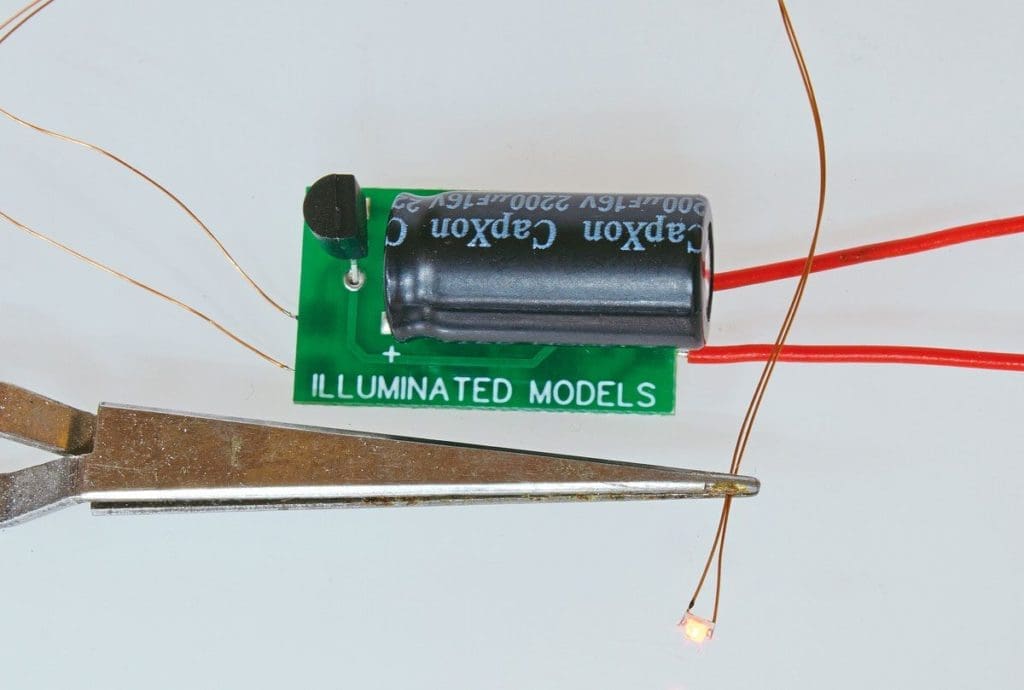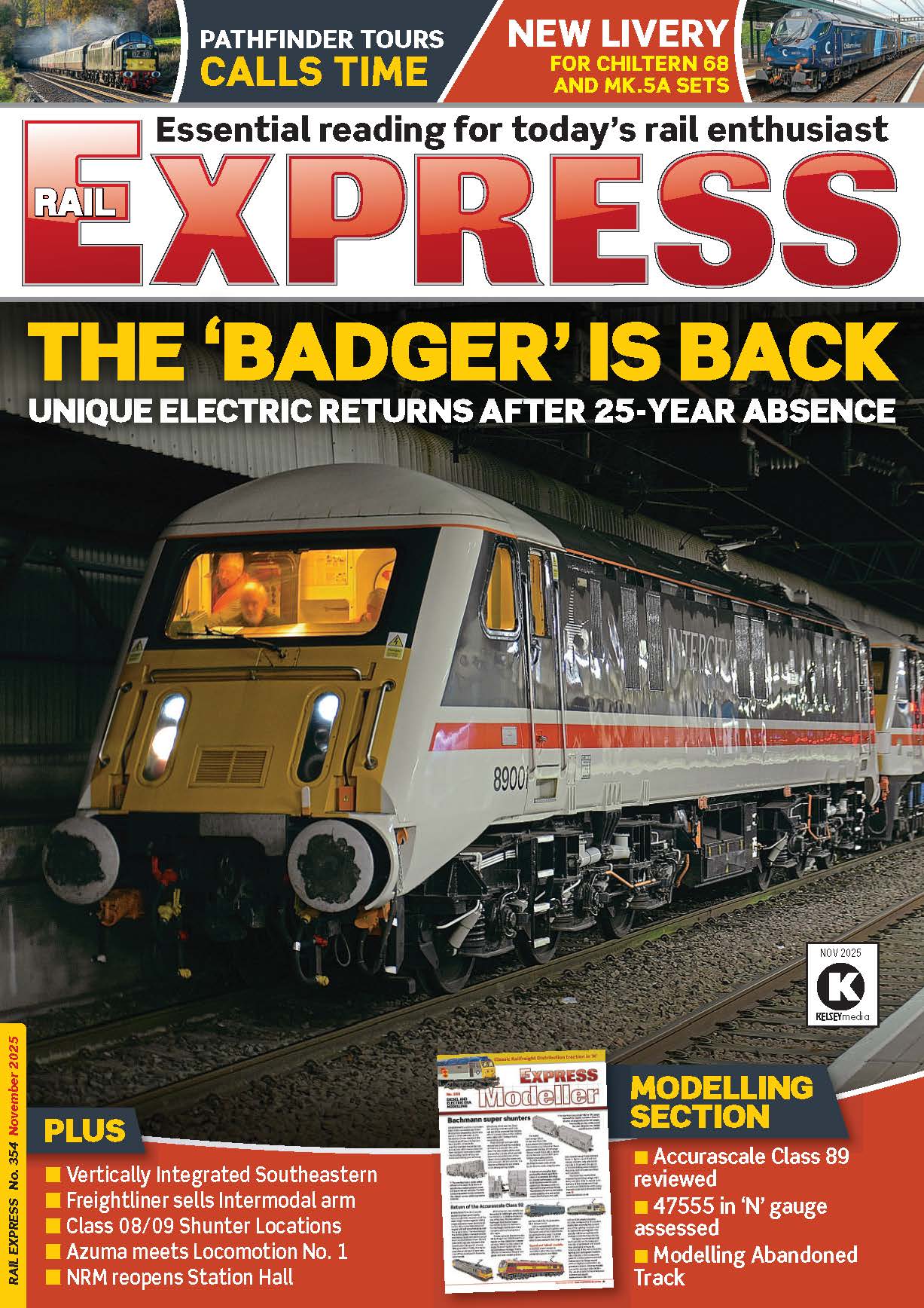A small but very useful range of economically-priced and sometimes hard to source electronic circuits are offered by Illuminated Models, including locomotive lighting enhancement kits and decoder socket combinations. Products that caught our attention included flashing tail-lamp circuits and a pack of very well-priced bridge rectifiers.
Bridge rectifiers
They are a must for DCC-users if a DCC power bus alternating current is to be tapped for a 12v DC supply (ideally from an accessory DCC bus rather than the one that supplies track power) for powering lighting circuits, control panel illumination, signals and turnouts (when accessory decoders are not being used). A pack of five (AL-20) is priced at £3.95 and they are professionally-made circuits with 4mm long solder pads for the input power and 12v DC output.
At 18mm long, 9mm wide and 3mm thick, they won’t take up much room in a control panel or rolling stock for lighting. Just check how much heat they produce for your given circuit before using in rolling stock, although when tested with LEDs, the bridge rectifiers only became warm, not hot.
Enjoy more Rail Express Magazine reading every month.
Click here to subscribe & save.
Simple but effective flashing tail-light circuits
Two different flashing tail-light circuits are offered in the Illuminated Models range: the AL-02 and AL-31. The first is a simple circuit with an input suitable for analogue and DCC power. The second is fitted with a capacitor for stay-alive operation and is aimed at DCC-users. One of the problems with flashing tail-lamp circuits is that they tend to be more of an on-off or ‘dah’ rather than a flash, including circuits factory fitted to ready to run models.
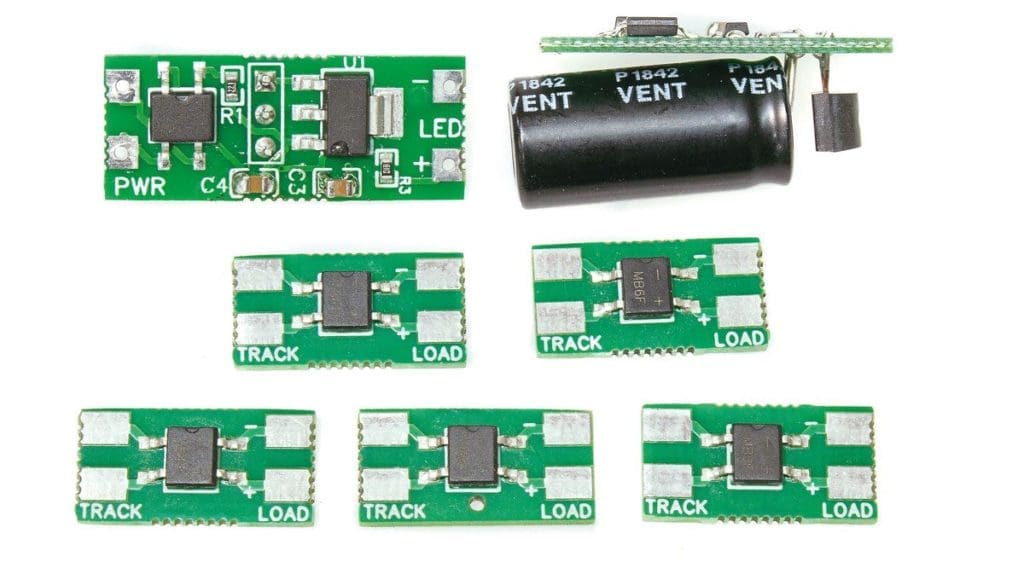
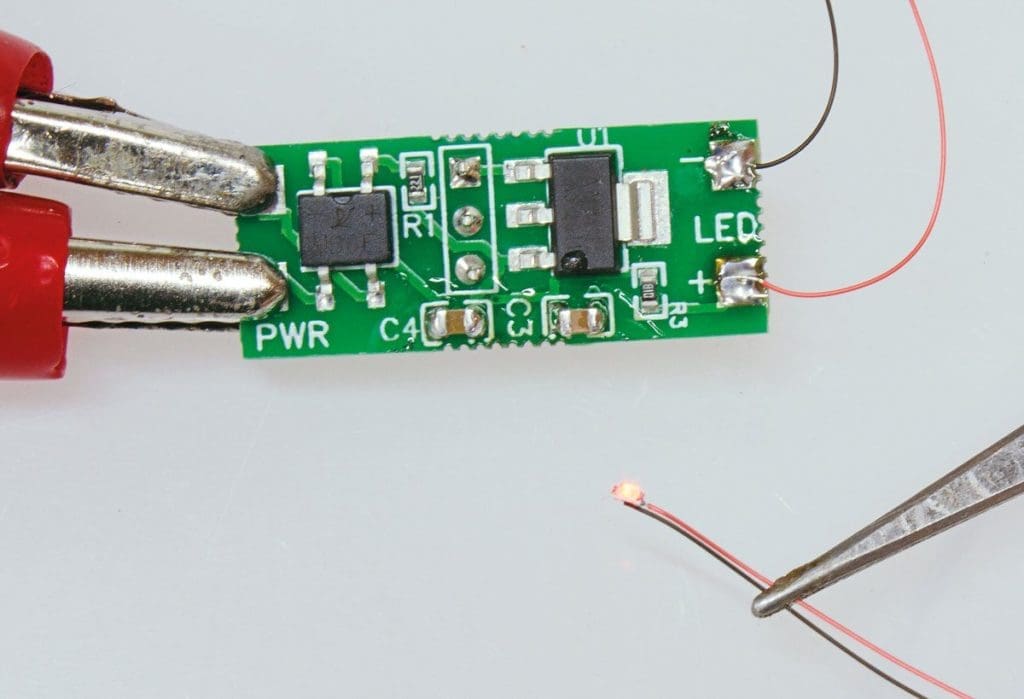
Not so the Illuminated Models products. They deliver a true flash, timed to replicate real flashing lamps. Not only do they deliver a good flash rate, they are very economically priced (£3.50-£4.99) and supplied with a tiny red SMT LED with enamelled wire leads.
The circuit without the capacitor will fit ‘N’ gauge rollingstock such as vans, containers and even open wagons fitted with a load. They are also small enough to fit in the underframes of some ‘OO’ gauge wagons and do not take up much room on the inside of a model.
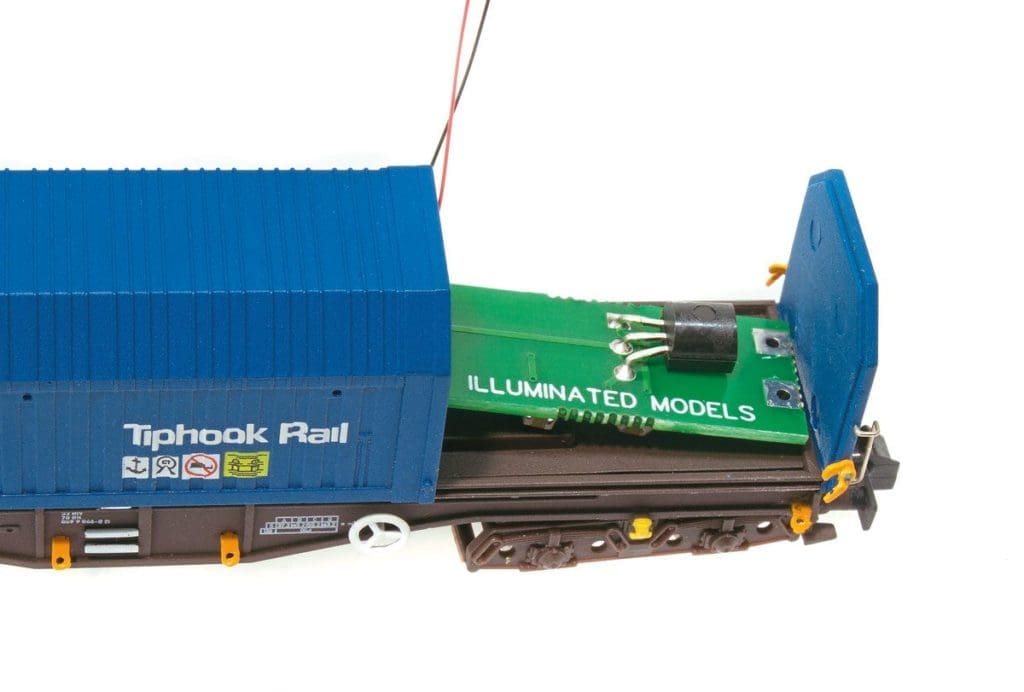
The second circuit is too large for ‘N’ gauge stock, but will not be challenging to fit to ‘OO’ gauge equipment. The larger circuit’s capacitor provided over 10 seconds of power when disconnected from track supply which means the flash is not affected by dirt on the track or wheels. They are designed to use track power supply and will have to be wired up to current collection pick-ups.
The attractive price, small size, ease of use with their generously sized solder pads and excellent flash rate makes both circuits very good value for money.
